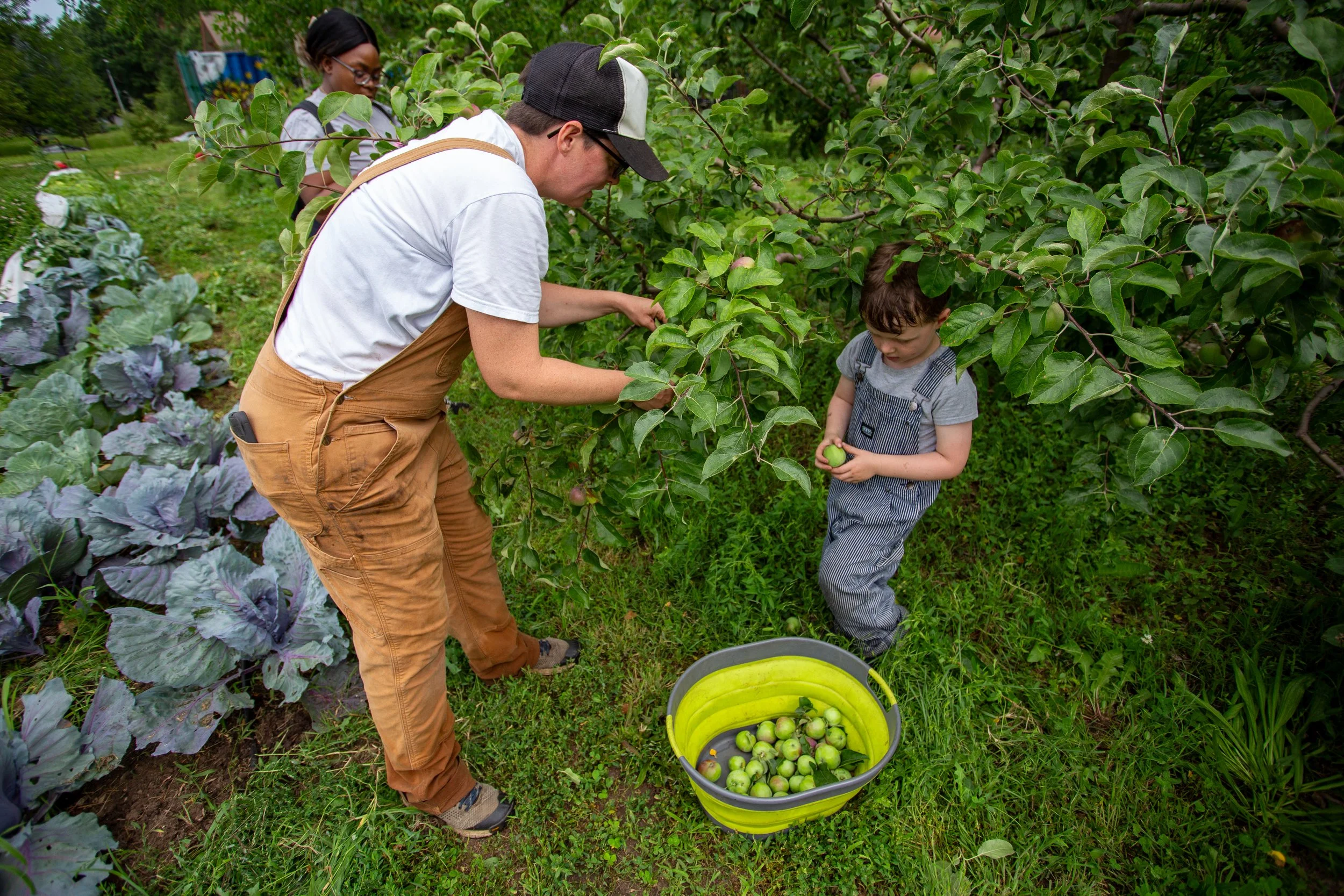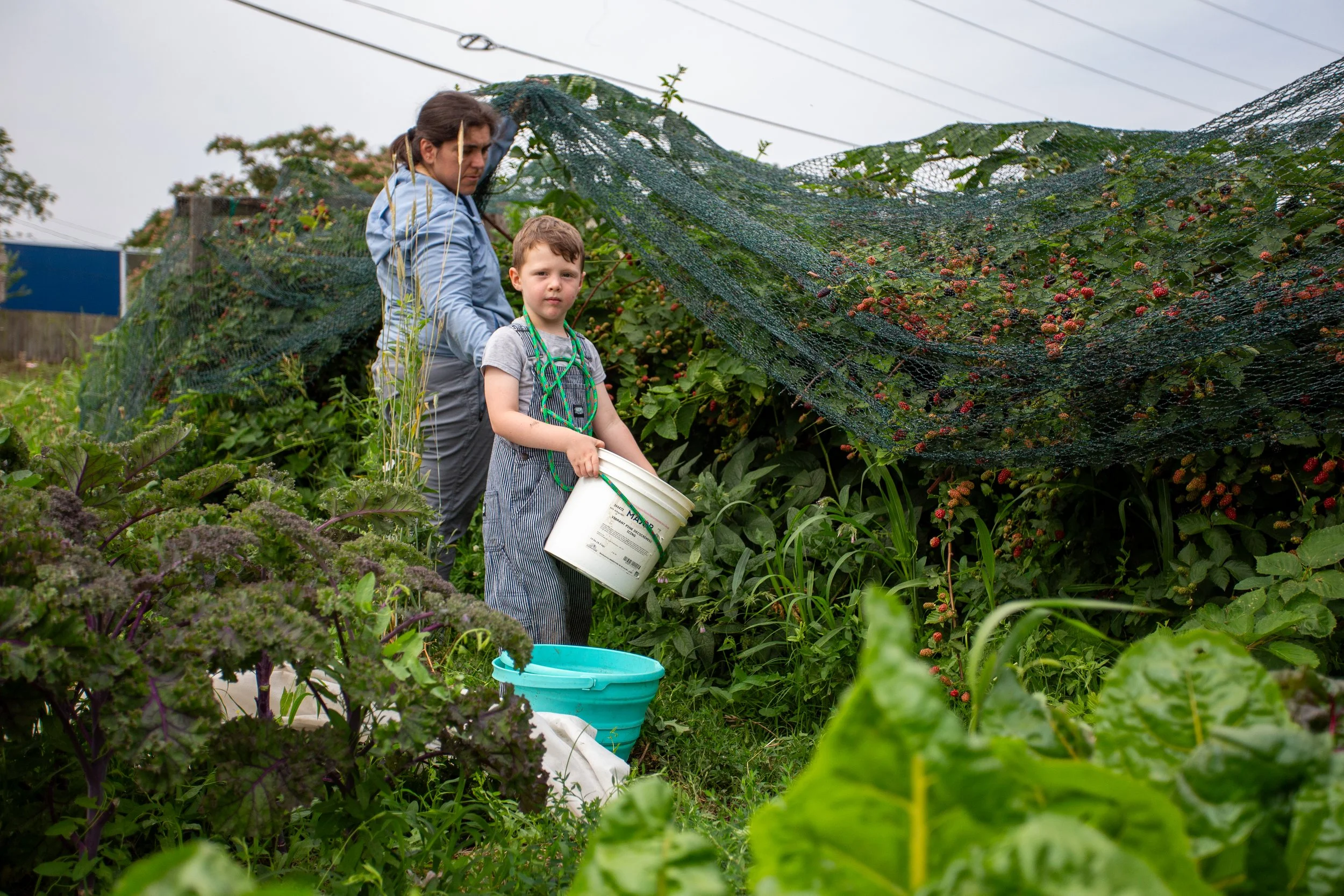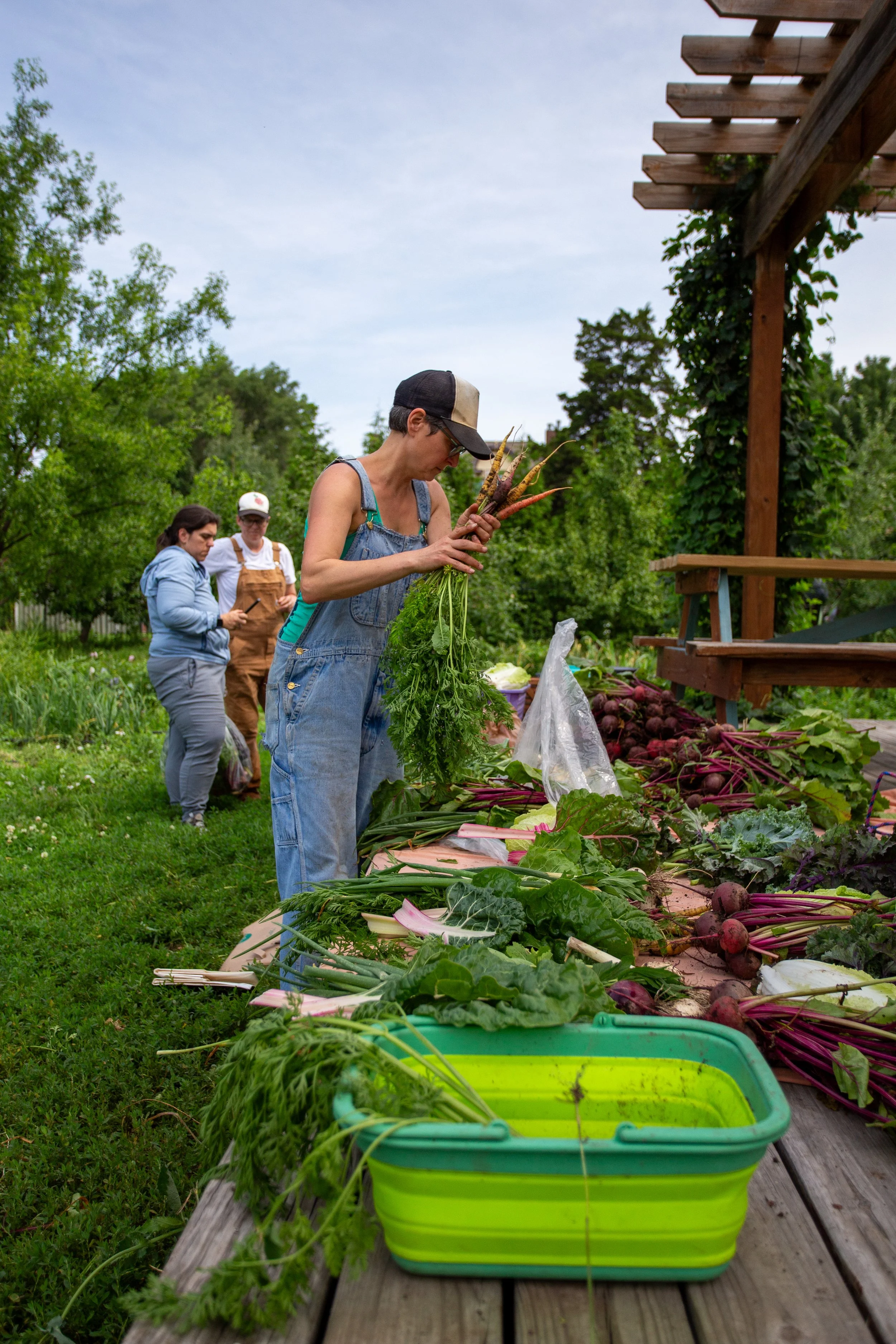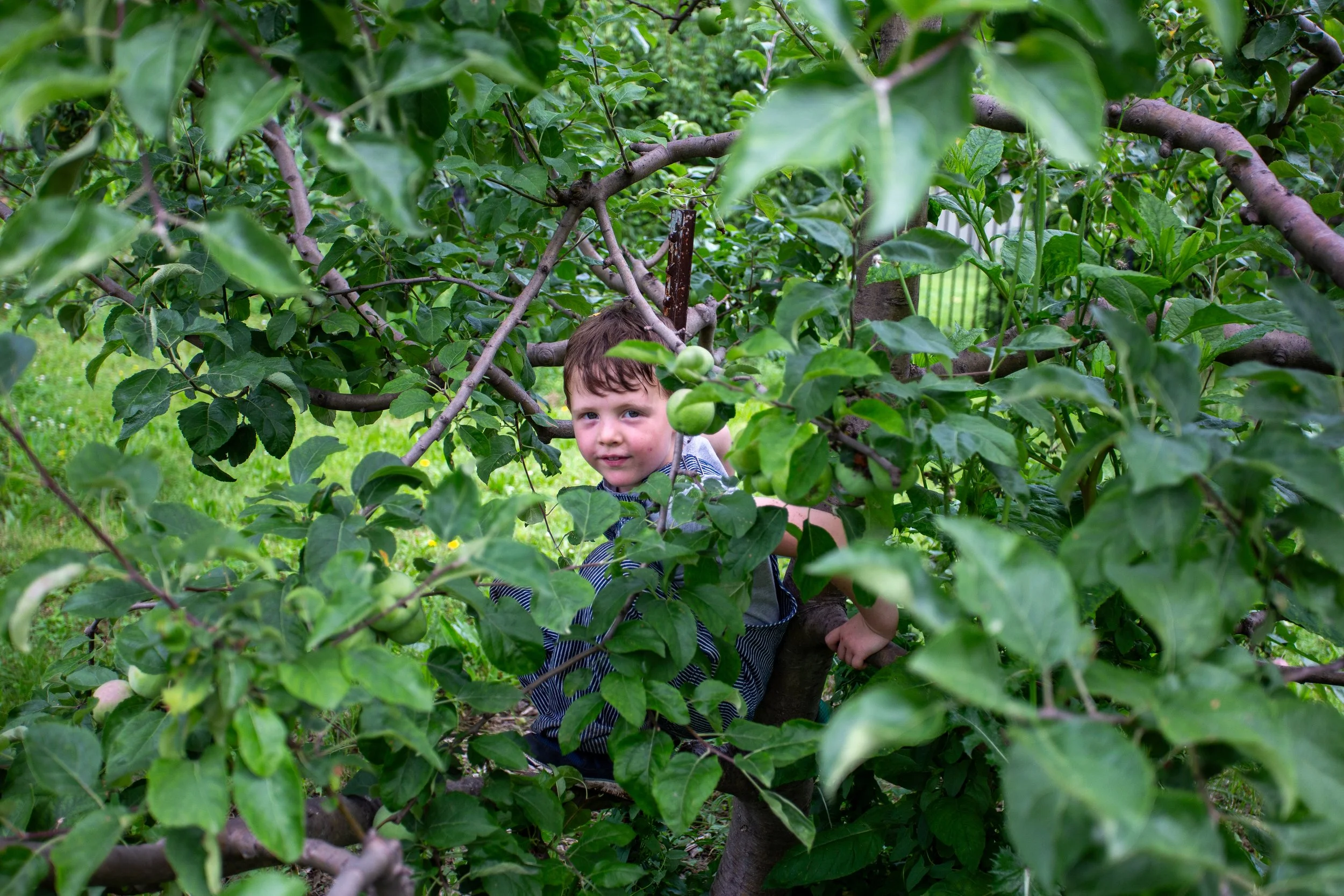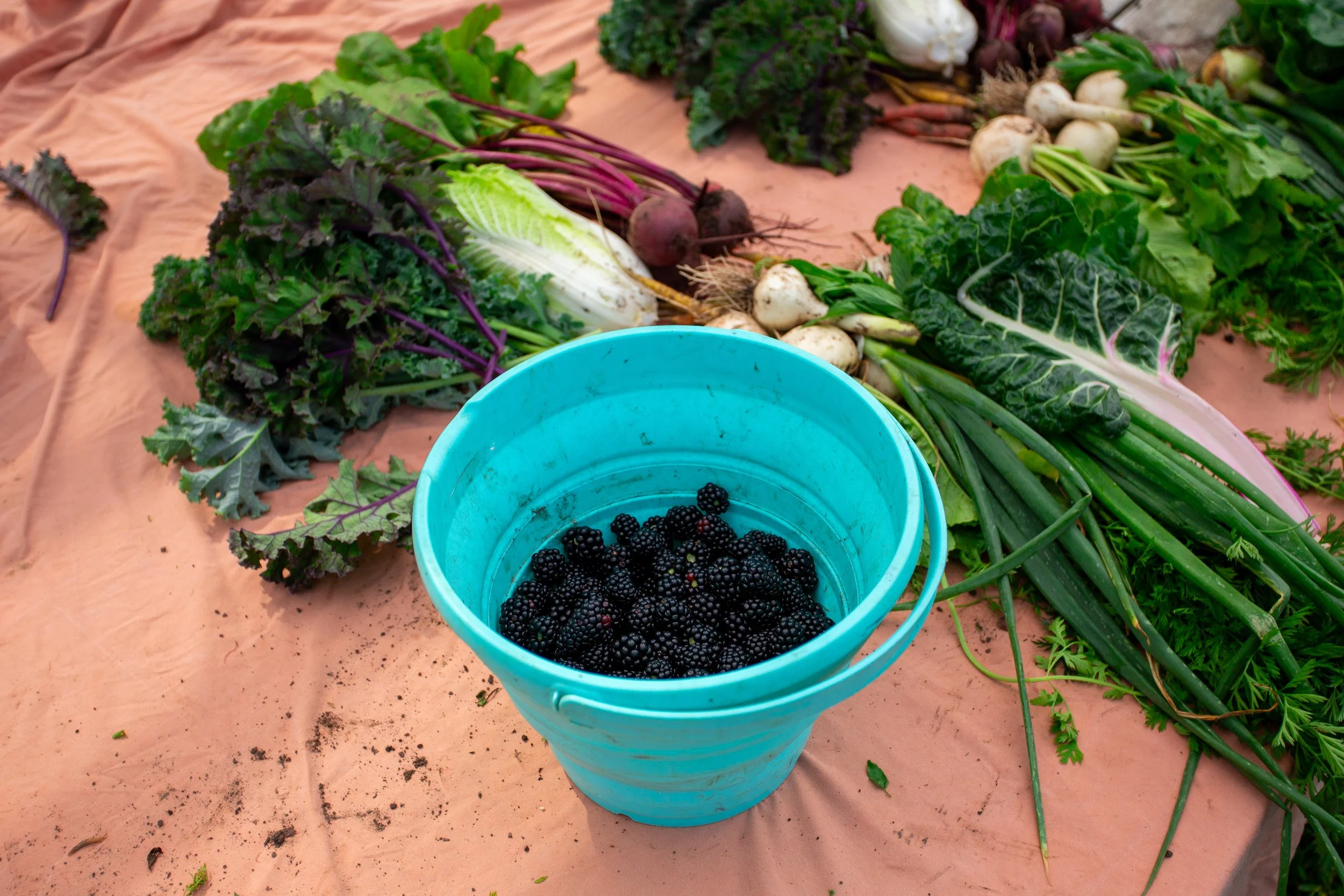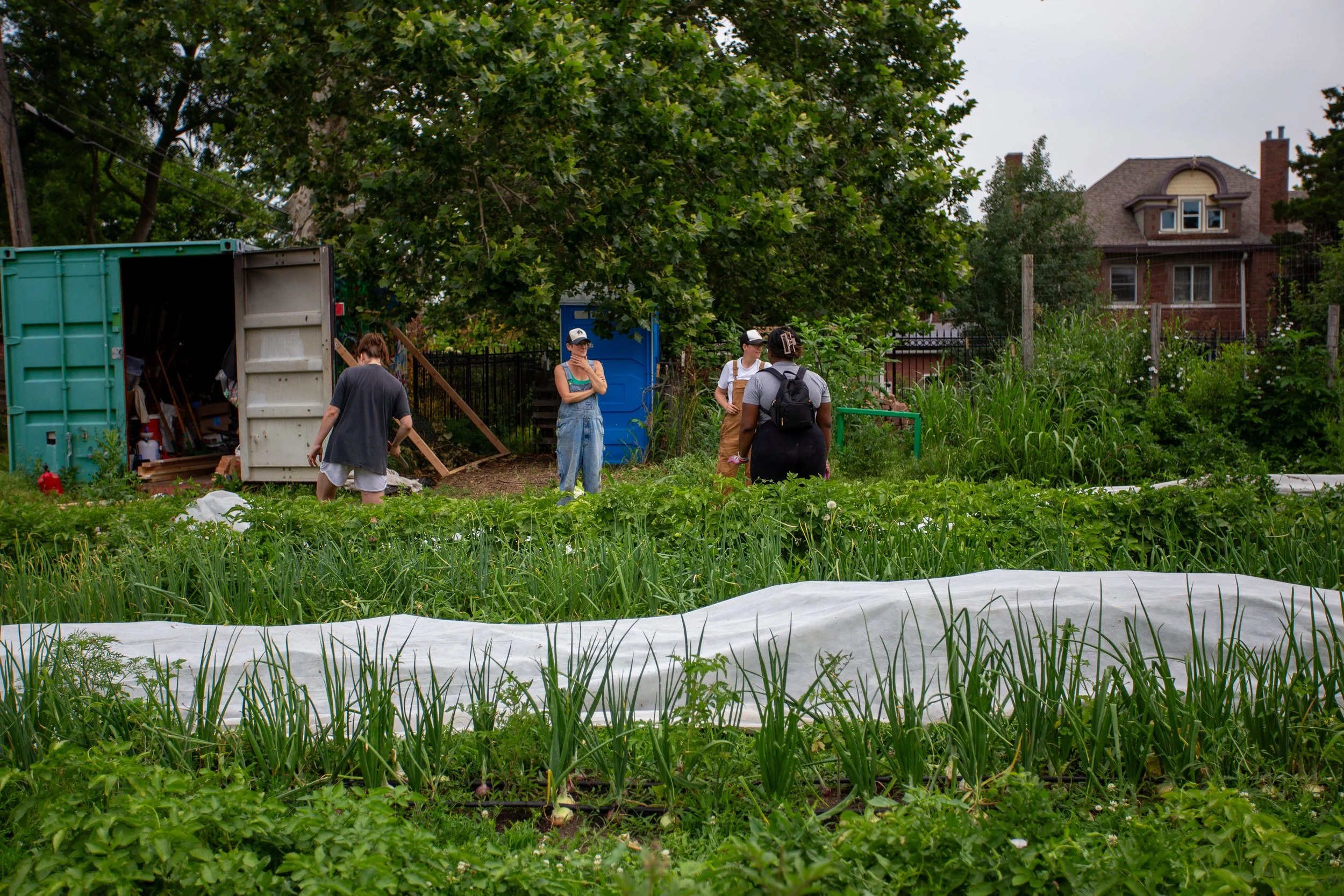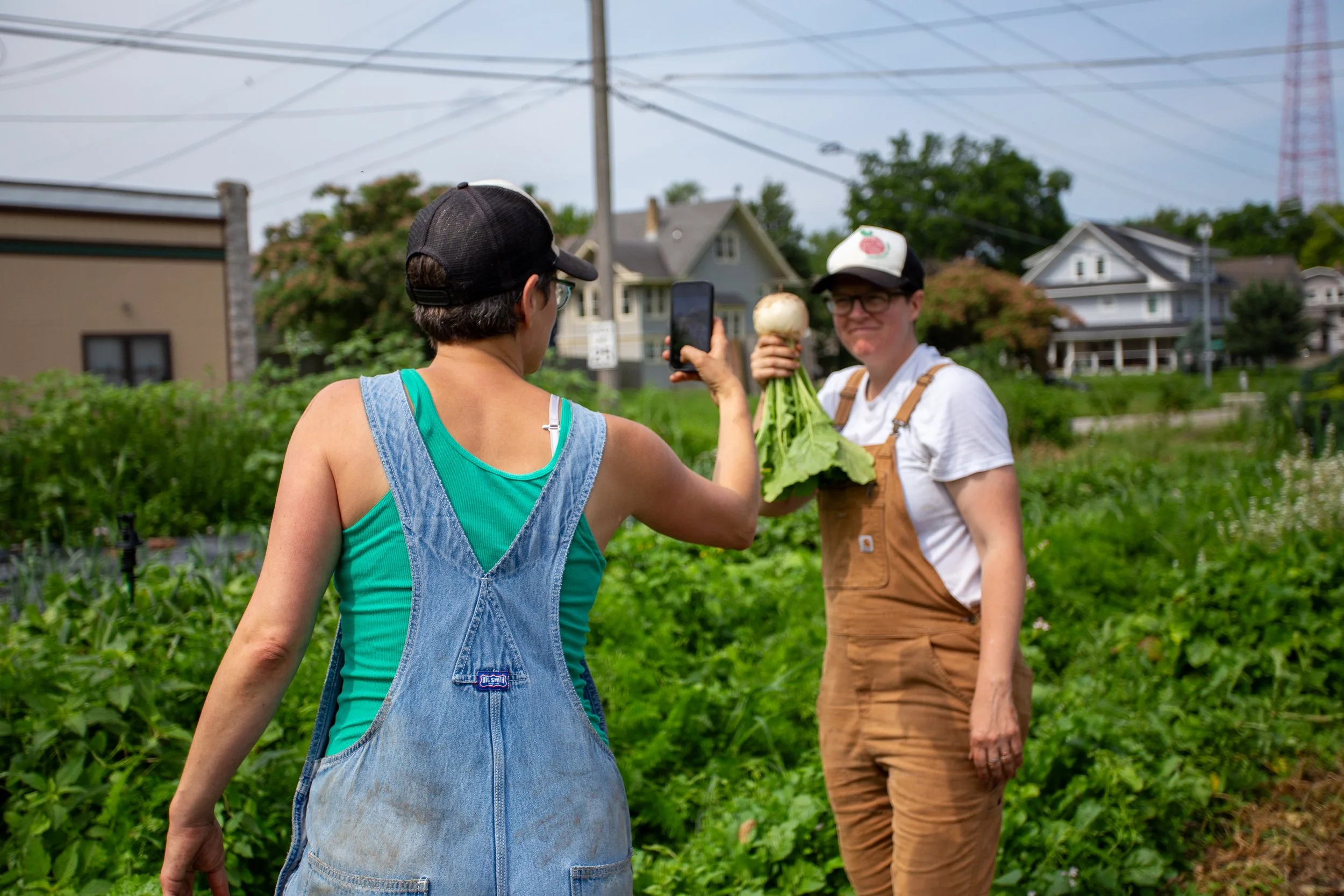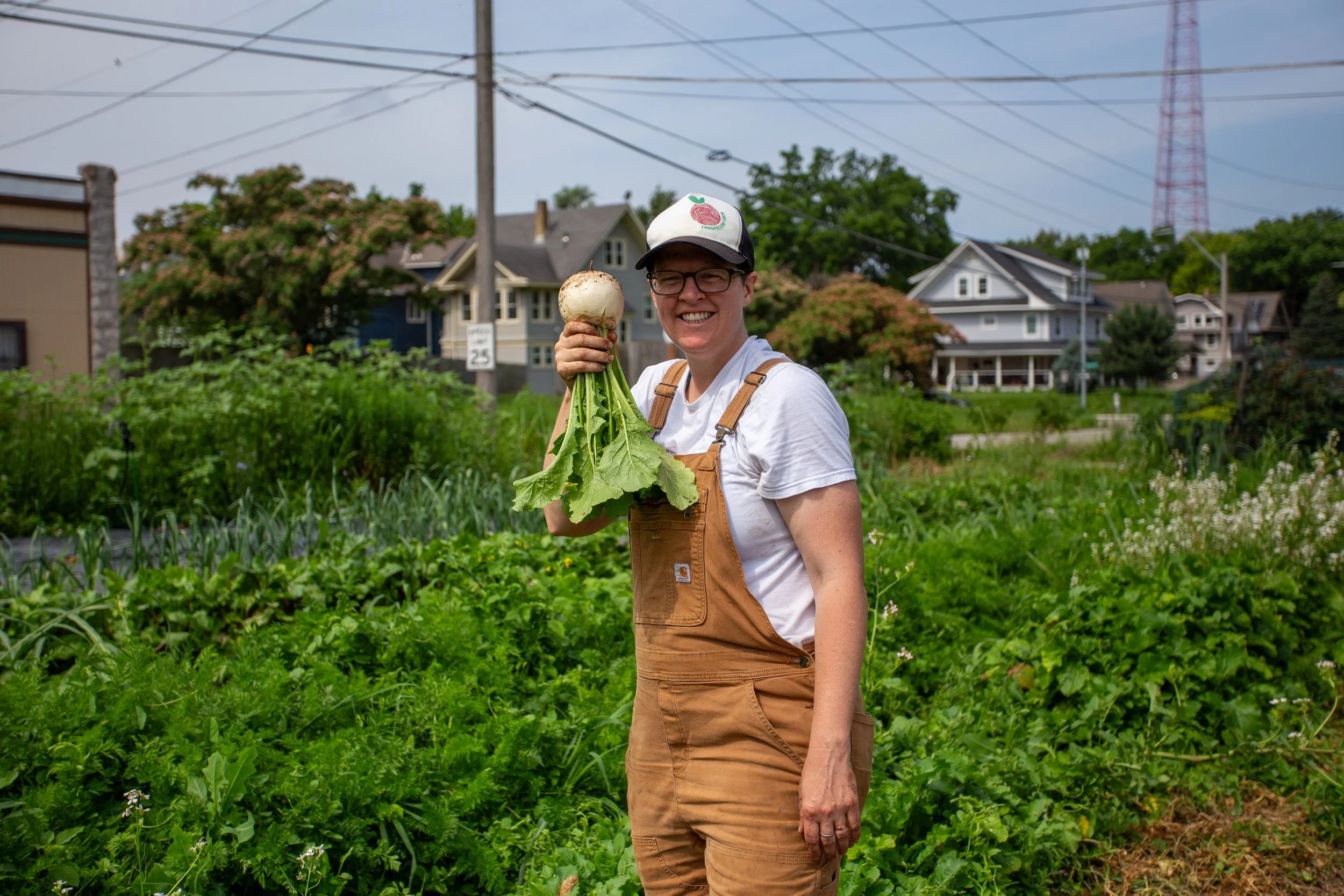Growing Together in Longfellow: A Story of Food, Family, and Community
This month, we’re highlighting Longfellow Farm, a Giving Grove orchard supported by Kansas City Community Gardens and grassroots community garden tucked into a Kansas City neighborhood. In this conversation with founder Ami Freeberg, we explore how a once-vacant lot became a thriving space for food, family, and connection. All powered by neighbors who show up, dig in, and share what grows.
Want to learn more about The Giving Grove straight from your inbox? Consider subscribing to our quarterly newsletter!
Contributed by Hannah Lavenburg, Marketing & Communications Assistant
From Vacant to Vibrant
When Ami Freeberg moved into Kansas City’s Longfellow neighborhood 11 years ago, she didn’t come with a grand plan. She simply had a sense that something good could grow from the vacant lots at the end of her street. Today, those once-empty spaces are home to Longfellow Farm, a vibrant community garden and Giving Grove orchard cared for by neighbors, volunteers, and the rhythms of the seasons.
“This all started pretty informally,” Ami says, laughing. “I just started showing up to neighborhood meetings asking if we could grow food there. Eventually they said, ‘Sure, if you can get water on the lot and keep it up, go for it.’ That was ten years ago.”
The land is technically owned by the Longfellow Community Association, which gave Ami and a small group of committed residents the green light to transform the space. The orchard was added quickly, just a few months after the garden beds were installed in 2015. It has since grown to include apples, pears, Asian pears, cherries, blackberries, figs, and jujubes.
“I love when people try the jujubes for the first time,” Ami says. “Most people like them, but nobody loves them,” she jokes. “They're kind of like a dry apple.”
Although Longfellow Farm isn’t affiliated with any formal organization, it receives orchard support from The Giving Grove program at Kansas City Community Gardens. “They really help dial in which varieties work well here,” Ami explains. “It’s one of the reasons our orchard is still thriving after so many years.”
On a warm summer morning, while Ami shared the farm’s story, her wife packed up the weekly CSA shares. Nearby, their little boy climbed into the apple trees and helped gather blackberries, adding his own harvest to the baskets. It was a joyful, ordinary moment that captured the spirit of the farm. Longfellow is a place where food, family, and community all grow together.
“Nobody’s getting paid to do this. If you show up and help, we want you to
take food home”
““People drive by, see something growing, and come ask about it. I used to send out weekly emails, but now it’s mostly about who shows up. Sunday mornings and Wednesday evenings are our
regular work times.””
Neighbors Helping Neighbors
The farm operates with a simple but powerful philosophy. Those who help out get to share in the harvest. “Nobody’s getting paid to do this,” Ami says. “If you show up and help, we want you to take food home.” In addition to volunteer harvests, the farm offers a small CSA to cover the water bill and recently started donating surplus produce to Food Not Bombs, a local group that cooks and shares vegan meals each week.
There’s no membership form and no formal sign-up. The garden thrives on word of mouth and neighborly curiosity. “It’s all pretty informal,” Ami says. “People drive by, see something growing, and come ask about it. I used to send out weekly emails, but now it’s mostly about who shows up. Sunday mornings and Wednesday evenings are our regular work times.”
From Roots to Harvest
Ami’s connection to growing food started long before Longfellow. She grew up in a small town in Iowa, helping her mom garden and sell handmade vegetarian sushi at the local farmers market. After moving to Kansas City to work with Cultivate KC, she found herself craving something more hands-on. “I was doing community engagement and events for work,” she says. “But I had a shady yard and wanted a space where I could grow food and get to know my neighbors.”
“It’s a lot of work, but it’s worth it.”
What started as one neighbor’s vision has grown into something much bigger. Ami still manages much of the behind-the-scenes logistics, but she’s quick to point out that it’s not a solo effort. “Every year, new people show up and fall in love with this place. Some move on, others stick around. The garden is always changing, always growing.”
Longfellow Farm is a living reminder of what can happen when people work together with a little trust, a patch of land, and a lot of heart. As Ami puts it, “It’s a lot of work, but it’s worth it.”

